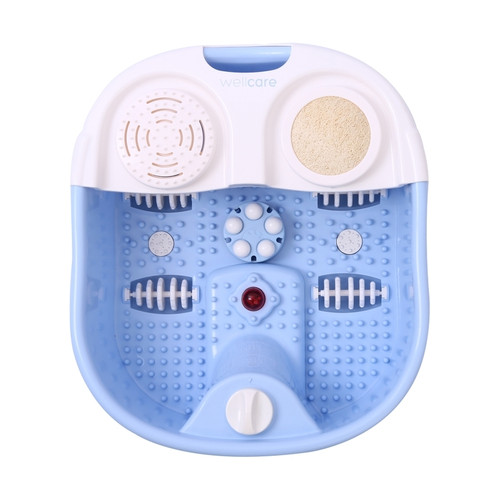Product Description
Understanding the Importance of Health Monitoring at Home
Health monitoring at home is a crucial aspect of modern healthcare. With advancements in technology, we now have the tools to keep a vigilant eye on our health from the comfort of our own homes. This proactive approach can prevent minor health issues from becoming major concerns, offering peace of mind and improving overall quality of life.
Introducing the Pulse Oximeter: A Game-Changer for Families
Among the various health monitoring devices, the pulse oximeter stands out. This small, yet powerful device measures oxygen saturation levels and pulse rate, providing invaluable insights into your respiratory and cardiovascular health. For families, having a pulse oximeter at home can be a game-changer, enabling timely interventions and ongoing health management.
What is Pulse Oximeter??
Definition and Basic Function
A pulse oximeter is a non-invasive device that clips onto a fingertip, toe, or earlobe to measure the oxygen saturation (SpO2) of your blood and your pulse rate. By emitting light waves through the skin, it detects the percentage of hemoglobin carrying oxygen in your blood.
How Pulse Oximeters Work
The device shines two wavelengths of light through your fingertip: one red and one infrared. Hemoglobin absorbs these lights differently depending on its oxygenation. By analyzing the light absorption, the pulse oximeter calculates your oxygen saturation and pulse rate, displaying the results on a digital screen.
The Evolution of Pulse Oximeters: From Hospitals to Homes
Initially, pulse oximeters were bulky, expensive, and confined to hospital use. Advances in technology have made them portable, affordable, and accessible for home use. Today, they are an essential tool in home health kits, helping people manage conditions like COPD, asthma, and even monitoring during COVID-19 recovery.
Top Reasons Why Every Home Needs a Pulse Oximeter
Early Detection of Health Issues
A pulse oximeter can detect low oxygen levels before symptoms become severe, enabling early intervention and treatment. This early detection can be lifesaving, especially for individuals with chronic respiratory or cardiac conditions.
Monitoring Chronic Conditions
For those managing chronic conditions such as COPD, asthma, or heart disease, regular monitoring with a pulse oximeter is essential. It provides real-time data, helping to track the effectiveness of treatments and adjust them as necessary.
Peace of Mind for Families
Having a pulse oximeter at home offers peace of mind. Whether monitoring a child’s asthma or an elderly relative’s heart condition, the ability to quickly check oxygen levels and pulse rate can alleviate worries and help make informed decisions.
Easy to Use for All Ages
Pulse oximeters are user-friendly and require no special training. Simply clip the device onto a finger and wait a few seconds for the readings. This ease of use makes it suitable for all ages, from children to seniors.
Affordable Health Monitoring
Compared to frequent doctor visits or hospital stays, owning a pulse oximeter is cost-effective. It provides continuous health monitoring without the need for expensive equipment or professional supervision.
Health Benefits of Using a Pulse Oximeter
Tracking Oxygen Levels
Regularly monitoring oxygen levels can help detect hypoxemia early, allowing for prompt medical attention and reducing the risk of complications.
Spotting Respiratory Issues
A pulse oximeter can quickly identify respiratory issues, such as those caused by infections or chronic conditions. By monitoring changes in oxygen saturation, you can seek timely medical advice.
Supporting Heart Health
Pulse oximeters also measure pulse rate, providing insights into heart health. Monitoring your pulse can help detect irregularities or trends that might indicate cardiovascular problems.
Managing Asthma and COPD
For individuals with asthma or COPD, a pulse oximeter is a vital tool. It helps manage these conditions by providing immediate feedback on how well their lungs are delivering oxygen to their blood.
How to Use a Pulse Oximeter
Step-by-Step Guide for Beginners
1. Wash your hands and ensure they are warm.
2. Rest and relax for a few minutes.
3. Place the pulse oximeter on your fingertip, making sure your nail is facing up.
4. Press the button to turn it on.
5. Wait a few seconds for the readings to stabilize.
6. Record the results and remove the device.
Best Practices for Accurate Readings
Ensure your hand is still and relaxed. Avoid using the device in bright light or with nail polish on, as these can affect accuracy. Measure when you are calm and at rest.
Common Mistakes to Avoid
Avoid taking readings with cold hands or while moving. Do not use the pulse oximeter on fingers with nail polish or artificial nails. Ensure the device is placed correctly for accurate results.
Features to Look for in a Pulse Oximeter
Accuracy and Reliability
Choose a pulse oximeter known for its accuracy and reliability. Look for devices that have been tested and approved by relevant health authorities.
Ease of Use and Readability
Select a model with a clear, easy-to-read display. Ensure it is simple to operate, even for those unfamiliar with technology.
Battery Life and Maintenance
Consider battery life, especially if you need to use it frequently. Opt for models with long-lasting batteries and easy maintenance procedures.
Additional Features: Alarms, Apps, and More
Some pulse oximeters come with additional features like alarms for low oxygen levels, Bluetooth connectivity, and accompanying mobile apps for tracking and analyzing data.
How Pulse Oximeters Help in Daily Life
Keeping Track of Family Health
Regular use of a pulse oximeter helps monitor the health of all family members, ensuring early detection of any potential issues.
Monitoring During Exercise
Athletes and fitness enthusiasts can use pulse oximeters to track their oxygen levels and pulse rate during workouts, optimizing performance and ensuring safety.
Assessing Sleep Quality
Pulse oximeters can help assess sleep quality by monitoring oxygen levels overnight. This can be particularly useful for detecting sleep apnea.
Travel and Altitude Monitoring
For travelers, especially those visiting high-altitude locations, a pulse oximeter is invaluable in monitoring oxygen levels and preventing altitude sickness.
Pulse Oximeters and COVID-19
Detecting Early Symptoms
COVID-19 often affects oxygen levels. A pulse oximeter can detect early symptoms by identifying low oxygen saturation, even before significant symptoms appear.
Monitoring Recovery at Home
For those recovering from COVID-19, regular monitoring with a pulse oximeter can track progress and alert to any deterioration, ensuring timely medical intervention.
Choosing the Right Pulse Oximeter for Your Family
Popular Models and Brands
Research and compare popular models and brands. Look for those with good reviews and high ratings for reliability and accuracy.
Comparison of Features and Prices
Compare the features and prices of different pulse oximeters to find one that fits your needs and budget. Consider additional features and long-term value.
Customer Reviews and Recommendations
Read customer reviews and seek recommendations from healthcare professionals. Real-life experiences can provide valuable insights into the best choices.
Maintaining Your Pulse Oximeter
Cleaning and Storage Tips
Regularly clean your pulse oximeter with a soft, damp cloth. Store it in a cool, dry place to ensure longevity and accuracy.
When to Replace Your Device
Replace your pulse oximeter if it becomes inaccurate, damaged, or after a few years of use, depending on the manufacturer’s recommendations.









